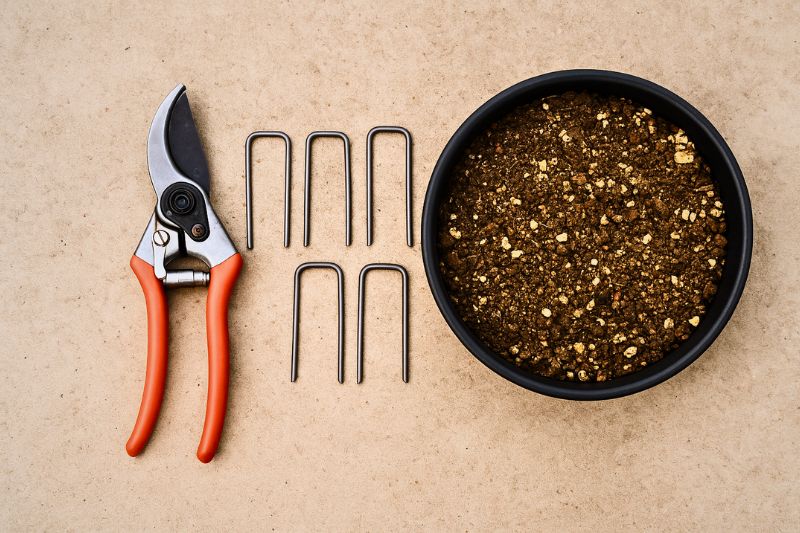Coloured-wood dogwoods (Cornus alba, Cornus sericea and Cornus sanguinea) are deciduous bushes much appreciated for their brightly coloured branches, particularly visible in winter. Whether red, yellow, orange or purple tones, these plants bring a bright note to garden during cold season. Propagating these dogwoods by layering ensures perfect fidelity to mother plant, while producing vigorous new young plants adapted to soil and climate. Simple to carry out, layering is accessible to all gardeners. Discover in this comprehensive guide how to proceed, step by step.
Why propagate coloured-wood dogwoods?
Propagating a coloured-wood dogwood by layering ensures perfect fidelity to mother plant, producing an exact copy of original plant. It is also a cost-effective method, as it allows obtaining new specimens with no expense. In addition, plants produced by layering benefit from ensured adaptation to their environment, already being acclimatised.
When to propagate dogwood by layering?
Ideal period to layer a dogwood is between June and October. During this phase, plant is in active growth, stems remain flexible and soil temperature favours root formation. Avoid periods of extreme heat or prolonged drought. In mild climates, layering can also be attempted in early spring.
Which layering method to choose?
Layering by couching or "arching" is simplest and most effective method for dogwoods, especially when some stems are close to ground.
Equipment needed to layer a dogwood
- Pruning shear : to clean branch and make final separation.
- Hooks, flat stones or U-shaped garden staples: to hold stem in place in soil.
- Free-draining substrate: mix of compost, sand and well-rotted compost (or potting compost).
- Rooting activator (facultative): to stimulate root formation.
- Stake or cane: to keep branch tip clear of soil.
- Watering can: to maintain regular moisture.

Layering by couching: practical steps
- Choose healthy, flexible branch: favour a young, well-developed stem located near ground.
- Dig shallow trench: about 5–10 cm deep, 15–20 cm long.
- Strip stem over 10–15 cm: remove leaves from portion that will be buried.
- Make slight cut in bark: small longitudinal nick will encourage root formation.
- Apply rooting activator (facultative): only on incised area.
- Place stem in trench: ensure good contact between stem and substrate.
- Secure branch firmly: use metal hook, flat stone or U-shaped staple.
- Cover with substrate: firm lightly to remove air pockets.
- Leave branch tip exposed: tip must remain above soil and kept upright with stake if needed.
- Water regularly: substrate should remain moist without waterlogging for several weeks.
- Monitor rooting: after 3–4 months, check whether roots have formed.
- Separate layered plant: cut stem at point of contact with mother plant.
- Replant young plant: either in ground or in pot for gentler establishment.

After propagation: care and maintenance
Once separated from mother plant, young dogwood requires attentive care:
- Water daily during first weeks, especially in summer.
- Mulch around base to retain moisture and protect against competing weeds.
- Watch for signs of establishment: new shoots, branch growth, healthy leaves.
- Avoid scorching full-sun exposure at start: favour partial shade.
- Add well-rotted compost in following spring to stimulate growth.
- Prune lightly in first year to encourage branching.
If leaves yellow or there is no growth, check root condition and soil drainage.































Comments